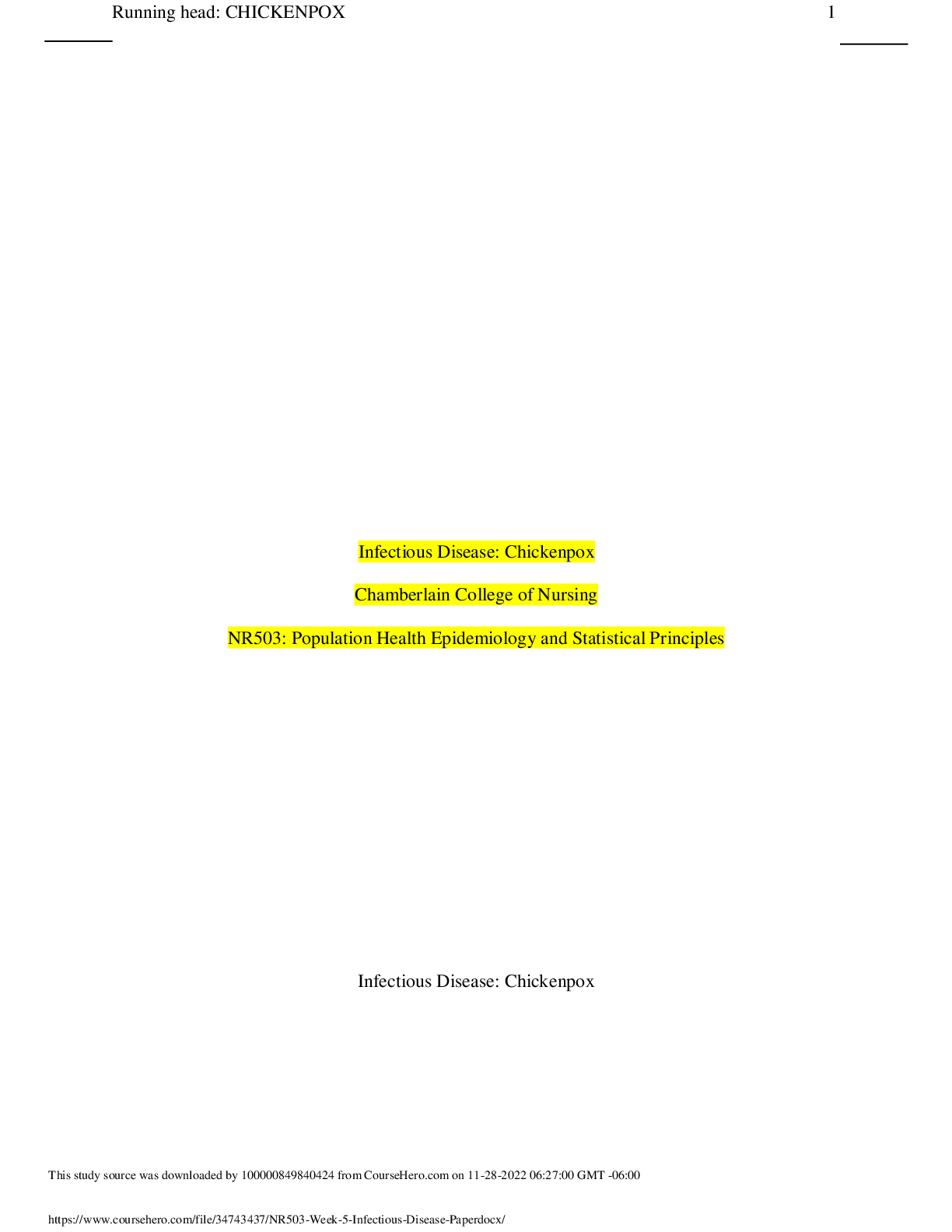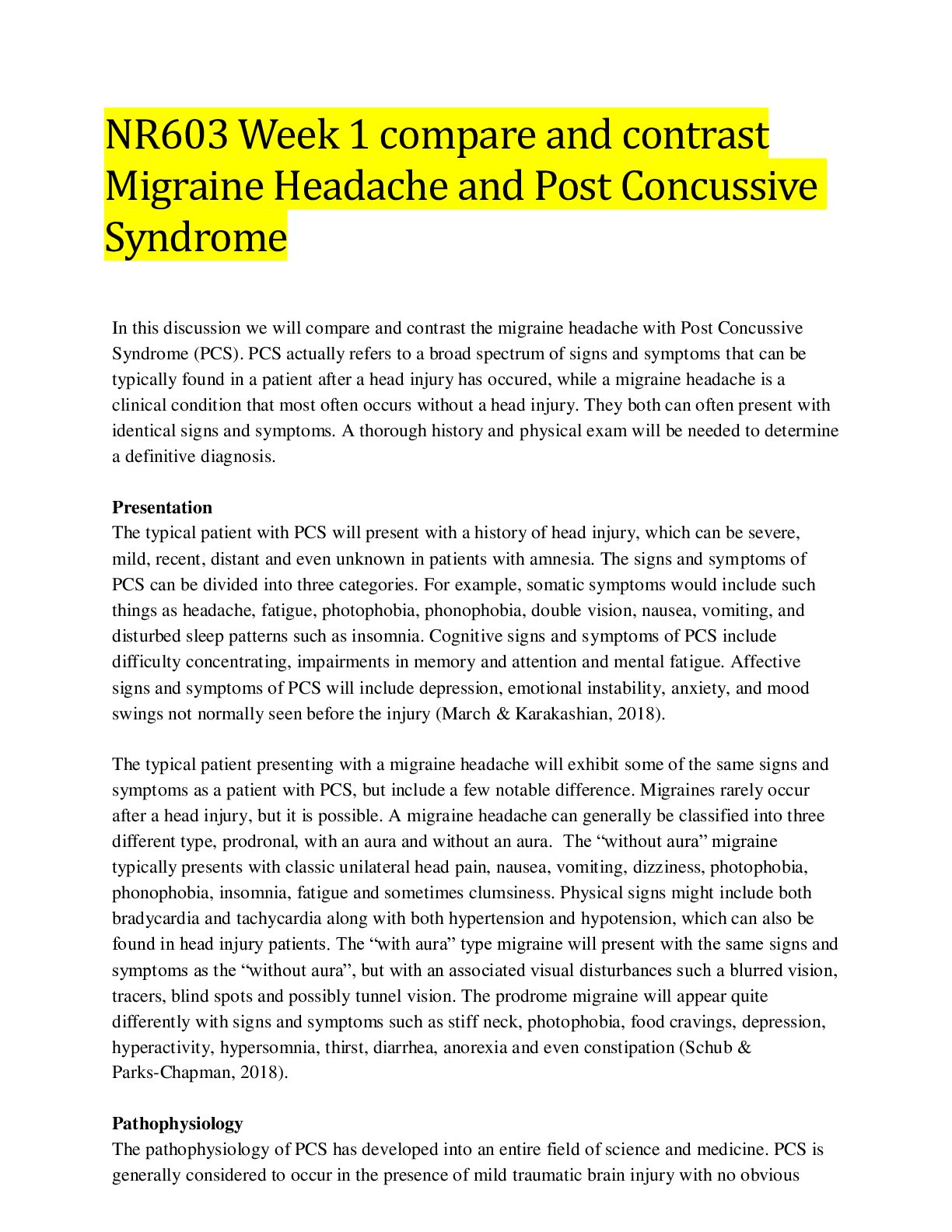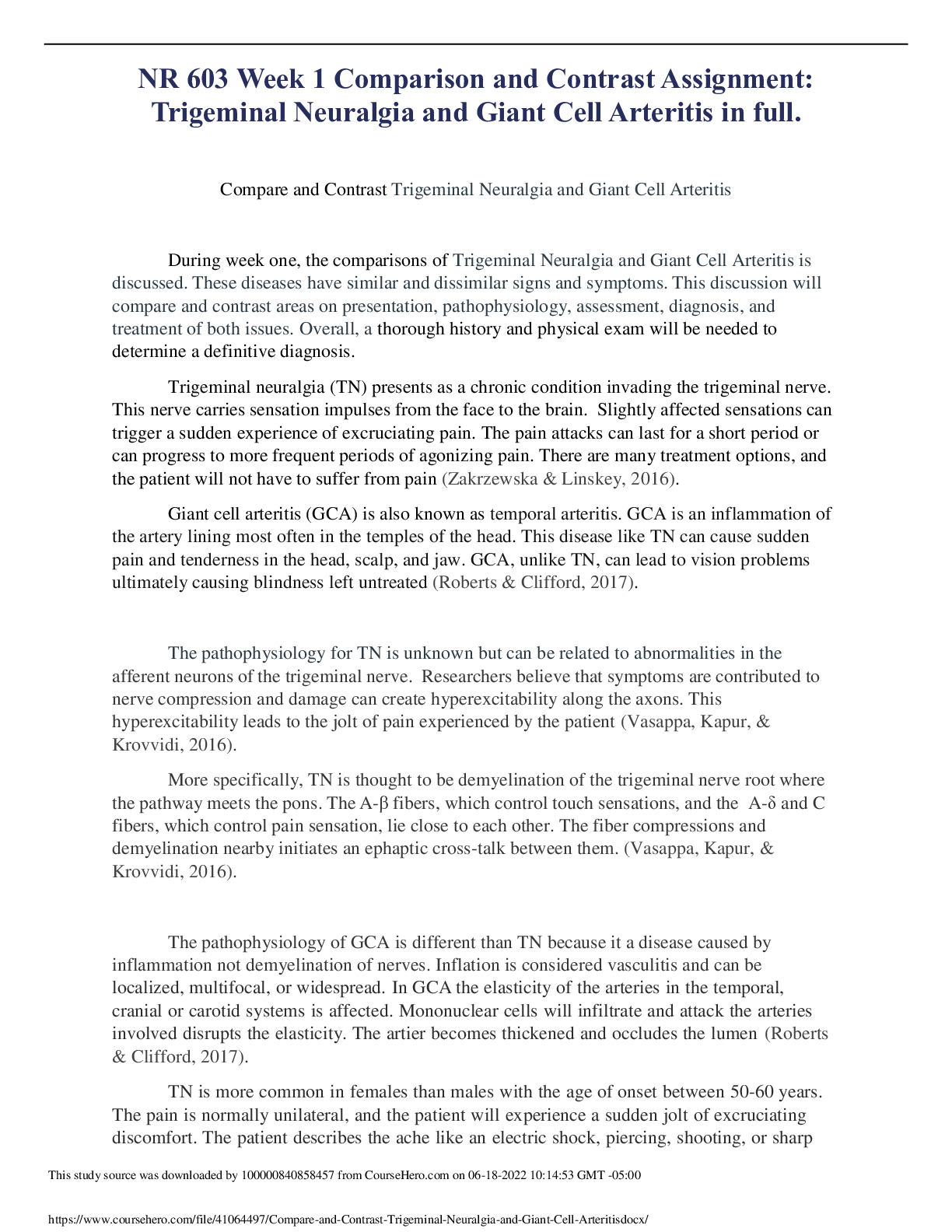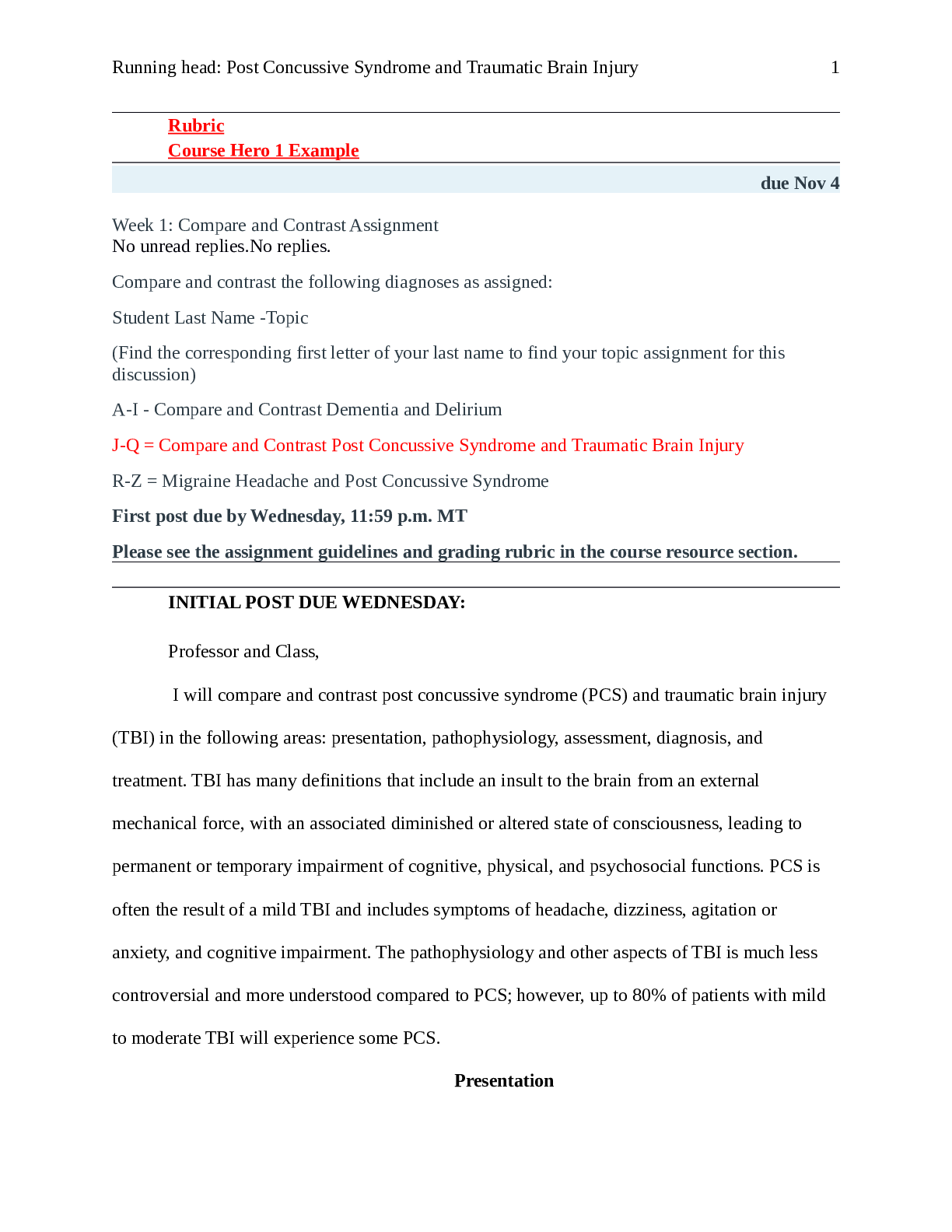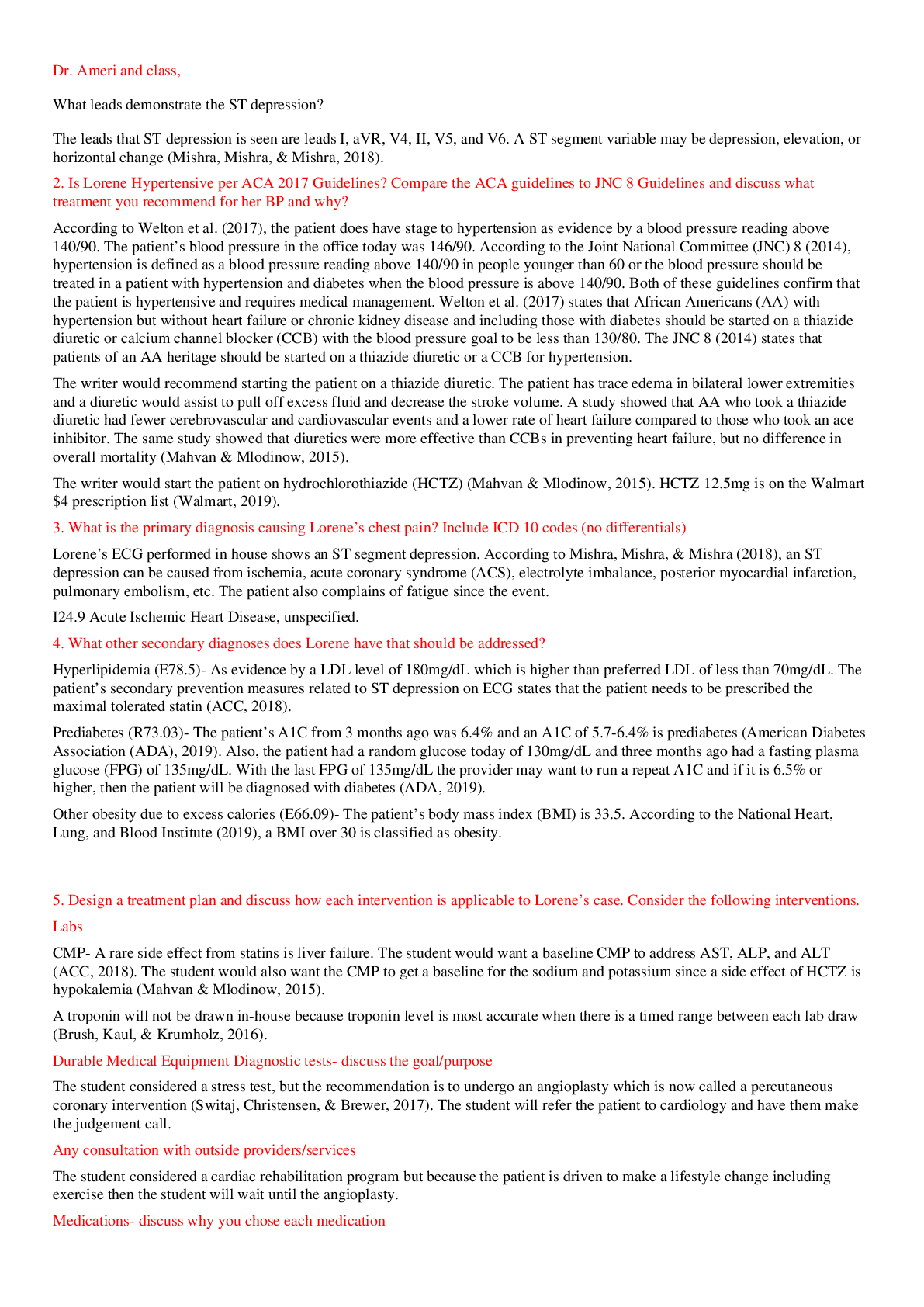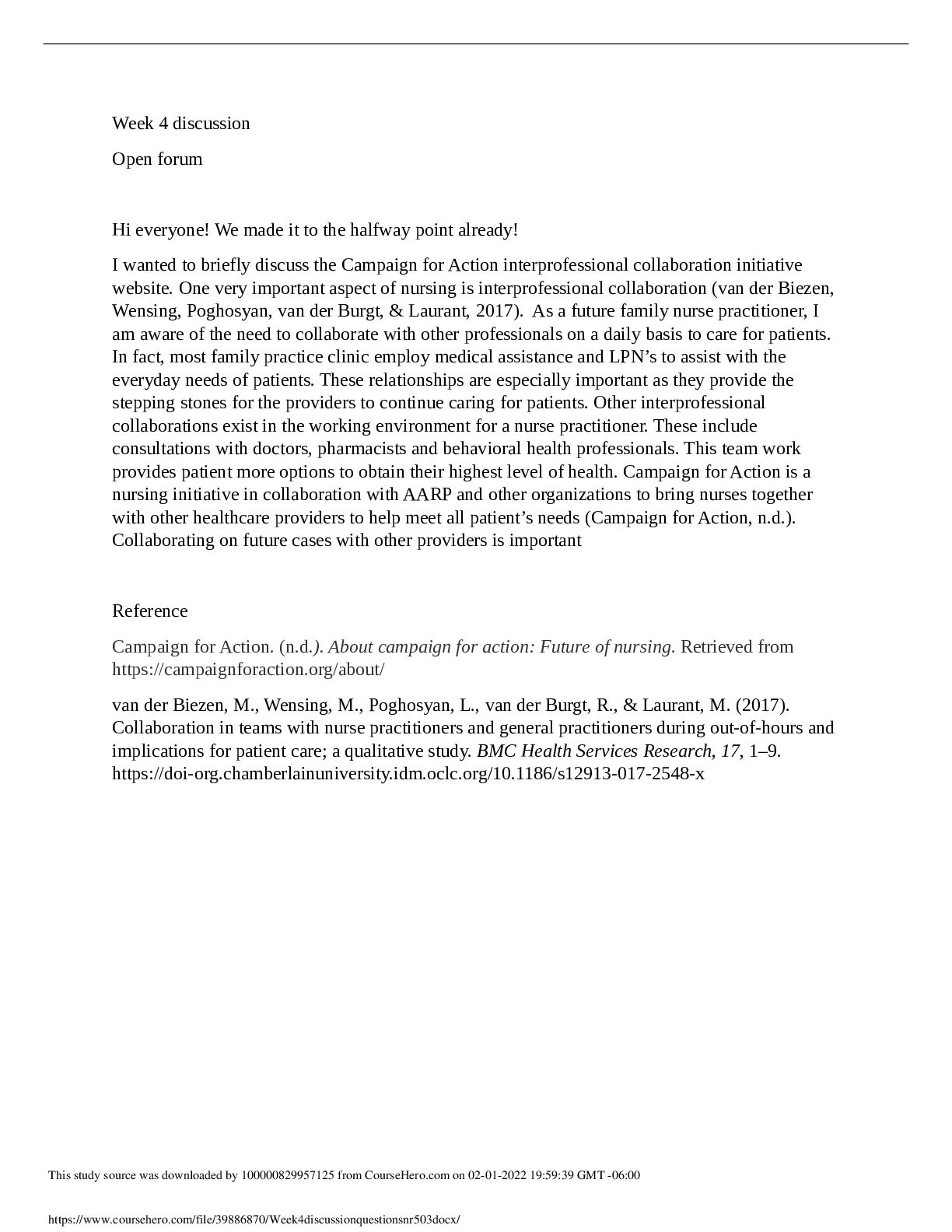*NURSING > DISCUSSION POST > NR 603 Week 1 Comparison and Contrast Assignment: Concussive Syndrome and Traumatic Brain Injury-Cha (All)
NR 603 Week 1 Comparison and Contrast Assignment: Concussive Syndrome and Traumatic Brain Injury-Chamberlain College Of Nursing( VERIFIED ANSWERS, GRADED A)
Document Content and Description Below
Compare and Contrast Post Concussive Syndrome and Traumatic Brain Injury Post Concussive Syndrome and Traumatic Brain Injury are two neurological disorders that are often associated together. The tr... eatment approach for these two conditions is different and therefore important to distinguish one from another. Traumatic Brain Injury (TBI) is a global issue due to high incidence of road traffic accidents, sports injuries, war-related injuries, and terrorism. Post-concussion syndrome (PCS) is a common sequel of traumatic brain injury (TBI) or a whiplash injuries (D'souza et al., 2015). Postconcussion syndrome (PCS) is referred to the persistence of post-concussive symptoms that lasts longer than the expected time frame of 1 to 6 weeks (Neuroscience Education Institute, 2017). Below is a comparison of presentation, pathophysiology, assessment, diagnosis, and treatment plan for these two conditions. Presentation Traumatic Brain Injury (TBI) is a penetrating or non-penetrating injury to the brain that causes a disruption in normal brain function. The injury could be a blow, bump, jolt, acceleration force, or deceleration force. TBI can be mild, moderate, or severe (Walsh, 2018). Depending on the severity, TBI can present in a wide variety of symptoms and functional changes that affect cognition, sensation, language, memory, and emotions (Schub & Holle, 2017). On the contrast, post-concussion syndrome (PCS) typically presents as a complex variety of symptoms including physical, cognitive, and neuropsychiatric symptoms that cannot be explained by other causes. Symptoms include nausea, dizziness, headache, blurred vision, fatigue, sleep disturbance, poor memory, poor attention, depression, irritability, anxiety, and emotional lability (Levin & Diaz-Arrastia, 2015). Pathophysiology Traumatic brain injury (TBI) could be the result of direct injury to skull, brain and meninges. The trauma can cause cerebral edema, decrease brain blood flow, and increased intracranial pressure. Depending on the area of the brain impacted, certain normal physiological functions will be effected. However, injury could also be on cellular level including cell death, axonal injury, and impaired synaptic plasticity. The abrupt forces of injury cause axonal shearing and diffuse axonal injury. These injuries disrupt connectivity of different regions in the brain and causes cognitive and neurological symptoms experienced in PCS (D'souza et al., 2015). Subtle structural abnormalities in white matter and cerebral microvasculature has also been reported to be responsible for the pathophysiology of PCS (Levin & Diaz-Arrastia, 2015). The extent of injury impacts the outcomes and symptoms experienced post injury (D'souza et al., 2015). Assessment In TBI there are various assessments that must be done immediately and continued on for monitoring the patient following the injury. This includes a Glasgow Coma Scale (GCS), a-WPTAS (Westmead Post-Traumatic Amnesia Scale). The WPTAS is a standardized tool used for assessment of amnesia following brain trauma. Other assessments that must be performed in both TBI and PCS include completing a full This study source was downloaded by 100000831988016 from CourseHero.com on 04-18-2022 07:23:56 GMT -05:00 https://www.coursehero.com/file/35480395/603-wk-1docx/ history, physical examination, cognitive screening, complete neurological exam, cranial nerves assessment, and mental health assessment (Marshall, Bayley, McCullagh, Velikonja, & Berrigan, 2012). Diagnosis Diagnosis of TBI is based on clinical presentations. A noncontract head CT would be indicated to rule out hemorrhage. A cervical spine x-ray may be indicated if there is suspicion for cervical spine fracture. MRI is not indicated for initial assessment and diagnosis; but, it may be necessary for a more specific anatomic detail and identification of diffuse axonal injury (Buttaro, Trybulski, Polgar-Bailey & Sandburg-Cook, 2017). In PCS, diagnosis is made base on clinical symptoms and history. A CT or MRI is typically obtained at time of TBI and rarely show abnormalities (March & Karakashian 2018). No lab-work is required for PCS diagnosis. The Rivermead Post-Concussion Symptoms (RPQ-13) Questionnaire is an effective tool in identifying the presence and severity of PCS symptoms through patient interview (March & Karakashian 2018). The DSM-5 does not list PCS as a separate diagnosis. Rather diagnosis is as mild or major neurocognitive disorder which is based on presentation of at least one symptom following head injury including loss of consciousness, posttraumatic amnesia, disorientation and confusion, and/or other neurological signs (March & Karakashian 2018). Treatment Treatment of TBI depends on severity and nature of the injury. In severe cases aggressive measures such as surgery may be necessary and in mild cases symptoms management and monitoring may be sufficient. Similarly, PCS treatment also depends on the presenting symptoms. For cognitive impairments, the first line of treatment wound be non-pharmacological measures such as rest, education, environmental and lifestyle modifications, cognitive behavioral therapy, cognitive rehabilitation, and good sleep hygiene. Other part of treatment would be symptomatic relief of specific symptoms such as NSAIDS or analgesics for headaches and antidepressants for depressive symptoms (Levin & Diaz-Arrastia, 2015; March & Karakashian 2018). Anticholinergics, sedatives, and medication that lower seizure threshold should be avoided. Studies have shown that n-acetyl cysteine (NAC) may be beneficial in reducing PCS symptoms following a TBI (Neuroscience Education Institute, 2017). References: Buttaro, T., Trybulski, J., Polgar-Bailey, P., & Sandburg-Cook, J. (2017). Primary care: A collaborative practice (5th ed.). Retrieved from https://online.vitalsource.com D'souza, M. M., Trivedi, R., Singh, K., Grover, H., Choudhury, A., Kaur, P., Kumar, P., … Tripathi, R. P. (2015). Traumatic brain injury and the post-concussion syndrome: A diffusion tensor tractography study. The Indian journal of radiology & imaging, 25(4), 404-14. Levin, H. S., & Diaz-Arrastia, R. R. (2015). Diagnosis, prognosis, and clinical management of mild traumatic brain injury. The Lancet. Neurology, 14(5), 506– 517. https://doi-org.chamberlainuniversity.idm.oclc.org/10.1016/S1474-4422(15)00002-2 (Links to an external site.)Links to an external site. This study source was downloaded by 100000831988016 from CourseHero.com on 04-18-2022 07:23:56 GMT -05:00 https://www.coursehero.com/file/35480395/603-wk-1docx/ Marshall, S., Bayley, M., McCullagh, S., Velikonja, D., & Berrigan, L. (2012). Clinical practice guidelines for mild traumatic brain injury and persistent symptoms. Canadian family physician Medecin de famille canadien, 58(3), 257-67, e128-40. March, P. P., & Karakashian, A. R. B. (2018). Post-Concussion Syndrome. CINAHL Nursing Guide. Retrieved from https://chamberlainuniversity.idm.oclc.org/login? url=https://search.ebscohost.com/login.aspx? direct=true&db=nup&AN=T702774&site=eds-live&scope=site Neuroscience Education Institute. (2017). Beyond the Impact. Update on the Assessment, Prevention and Treatment of Neuropsychiatric Sequelae associated with Traumatic Brain Injury. NEI Press, Carlsbad, CA. link to article (Links to an external site.)Links to an external site. Schub, T. B., & Holle, M. R. B. O. (2017). Traumatic Brain Injury, Nonpenetrating, Combat-Related: Field Management. CINAHL Nursing Guide. Retrieved from https://chamberlainuniversity.idm.oclc.org/login? url=https://search.ebscohost.com/login.aspx? direct=true&db=nup&AN=T704669&site=eds-live&scope=site (Links to an external site.)Links to an external site. Walsh, K. R. M. C. (2018). Case Management: Traumatic Brain Injury. CINAHL Nursing Guide. Retrieved from https://chamberlainuniversity.idm.oclc.org/login? url=https://search.ebscohost.com/login.aspx? direct=true&db=nup&AN=T921982&site=eds-live&scope=site [Show More]
Last updated: 1 year ago
Preview 1 out of 3 pages
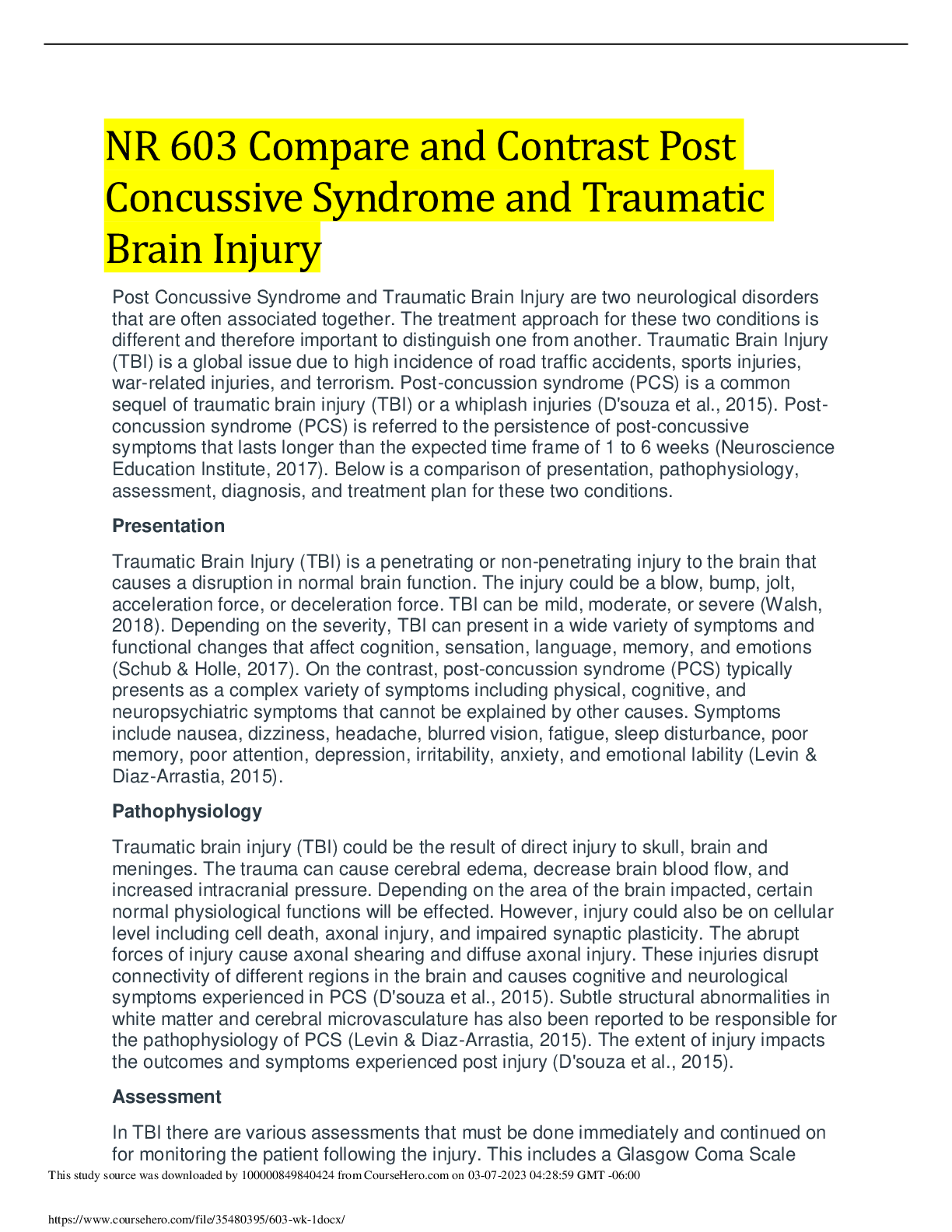
Reviews( 0 )
Document information
Connected school, study & course
About the document
Uploaded On
Apr 18, 2022
Number of pages
3
Written in
Additional information
This document has been written for:
Uploaded
Apr 18, 2022
Downloads
0
Views
61

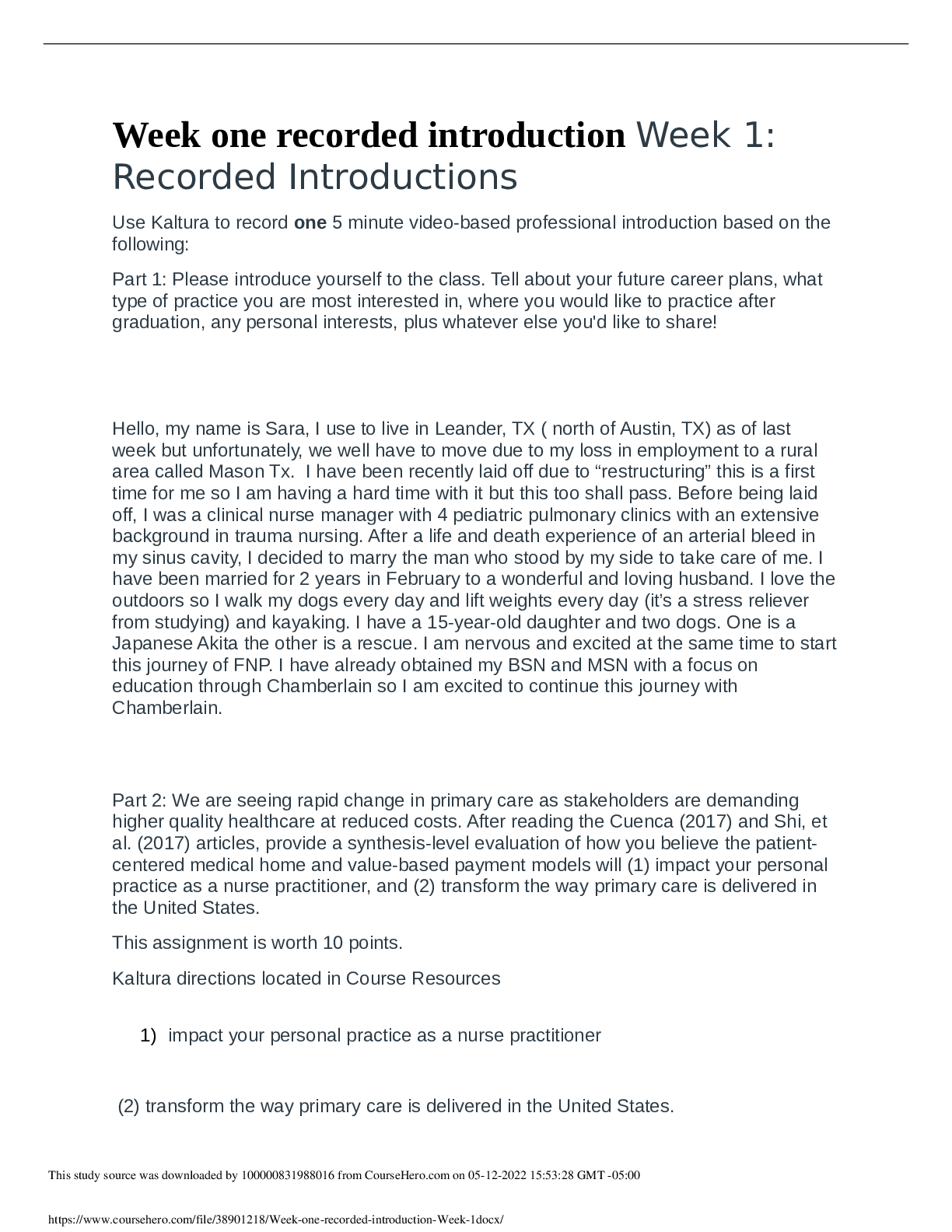


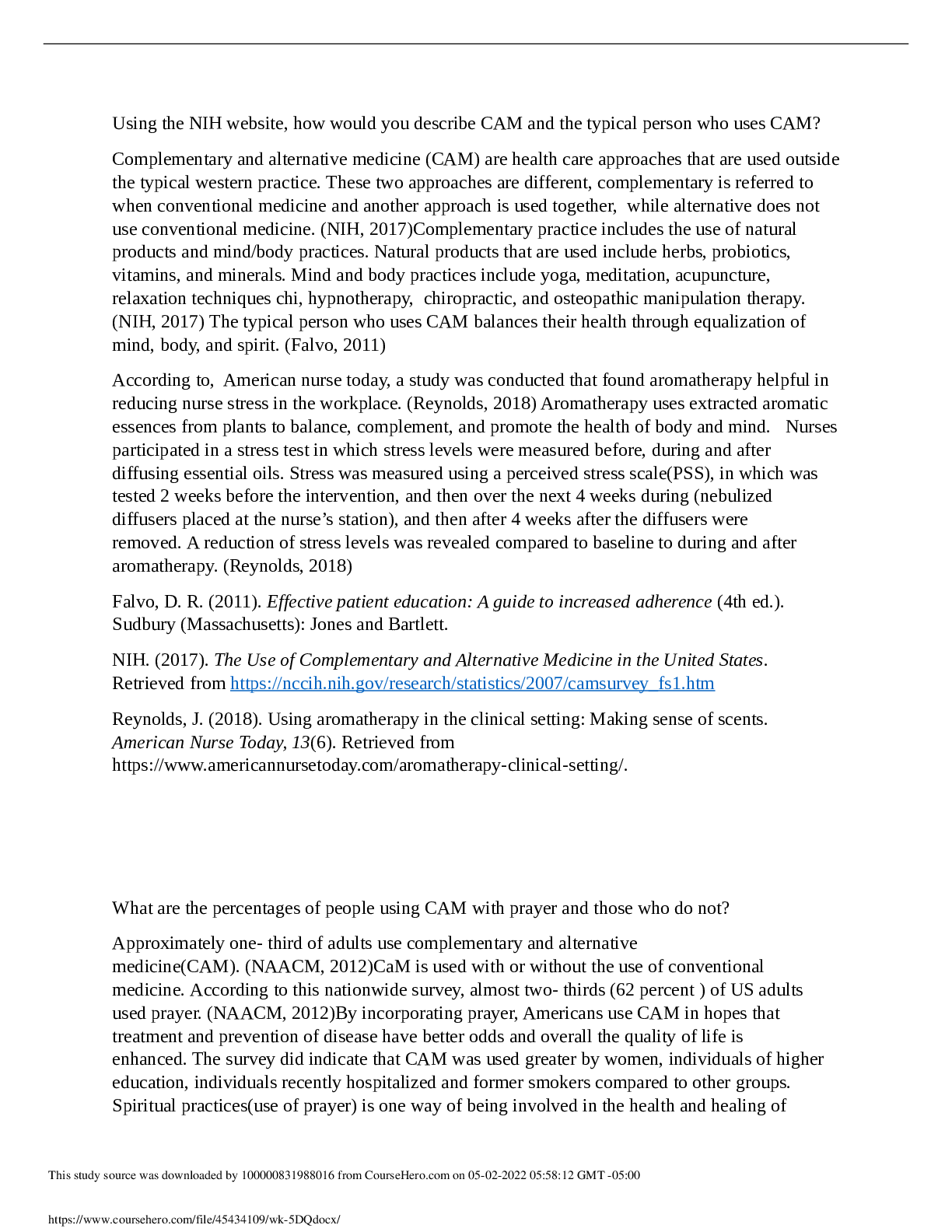

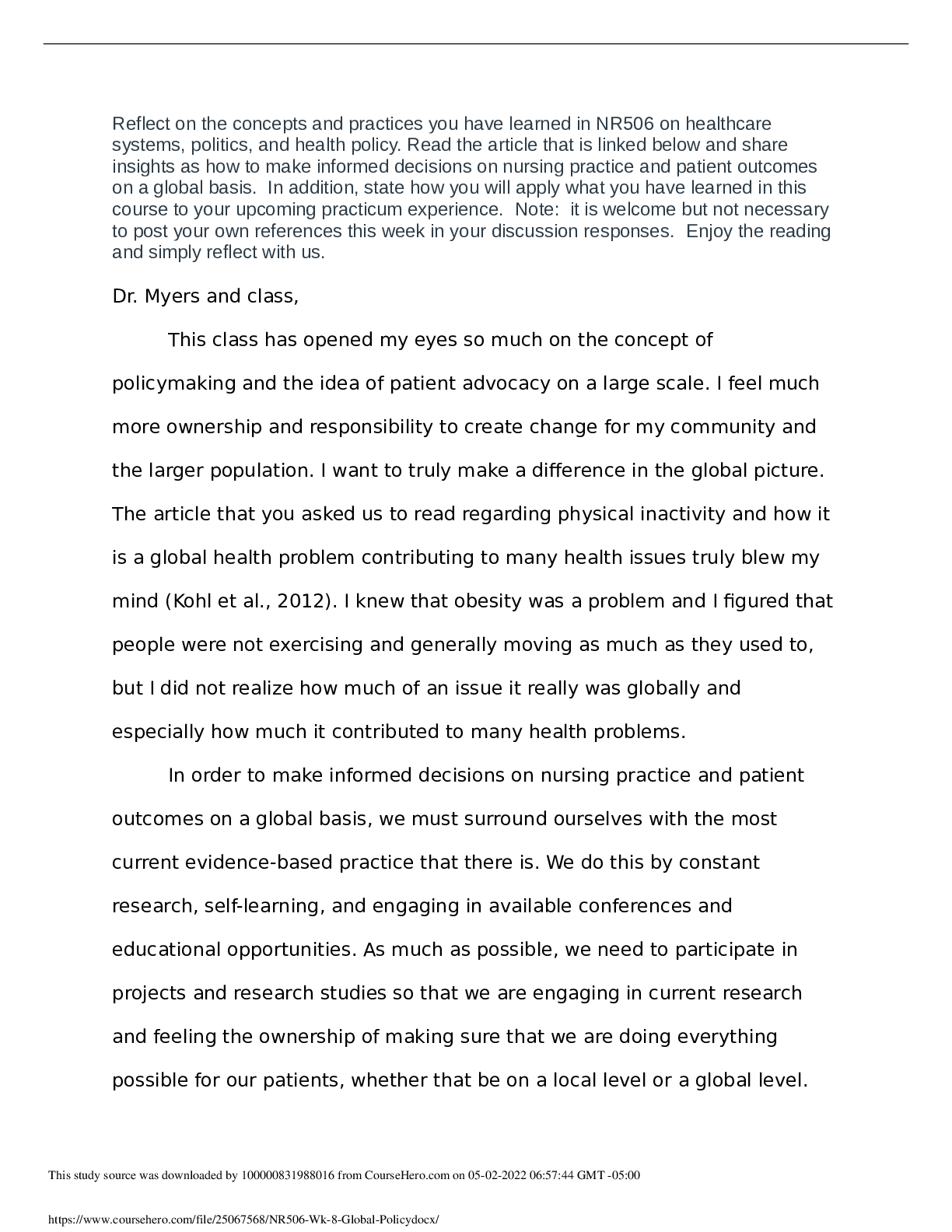
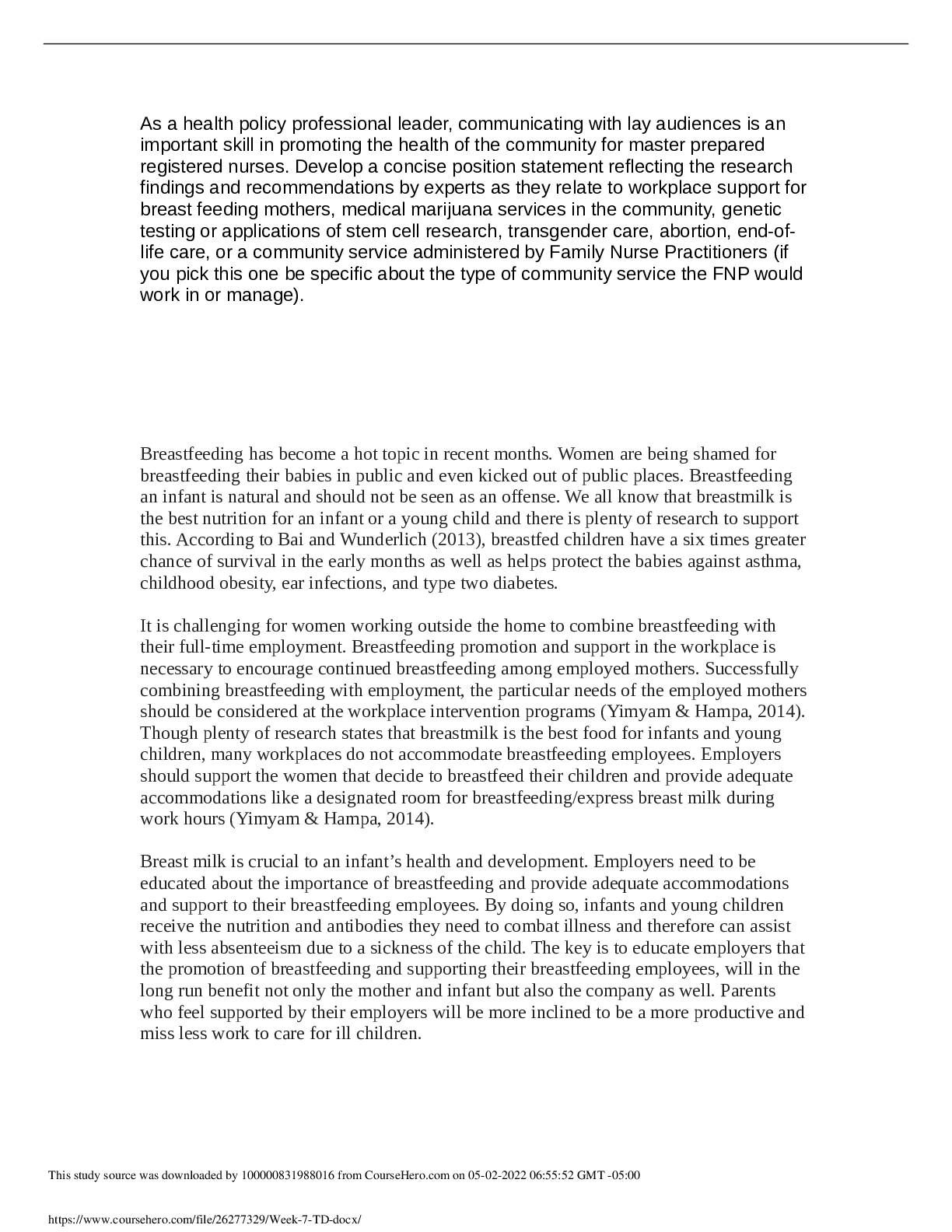
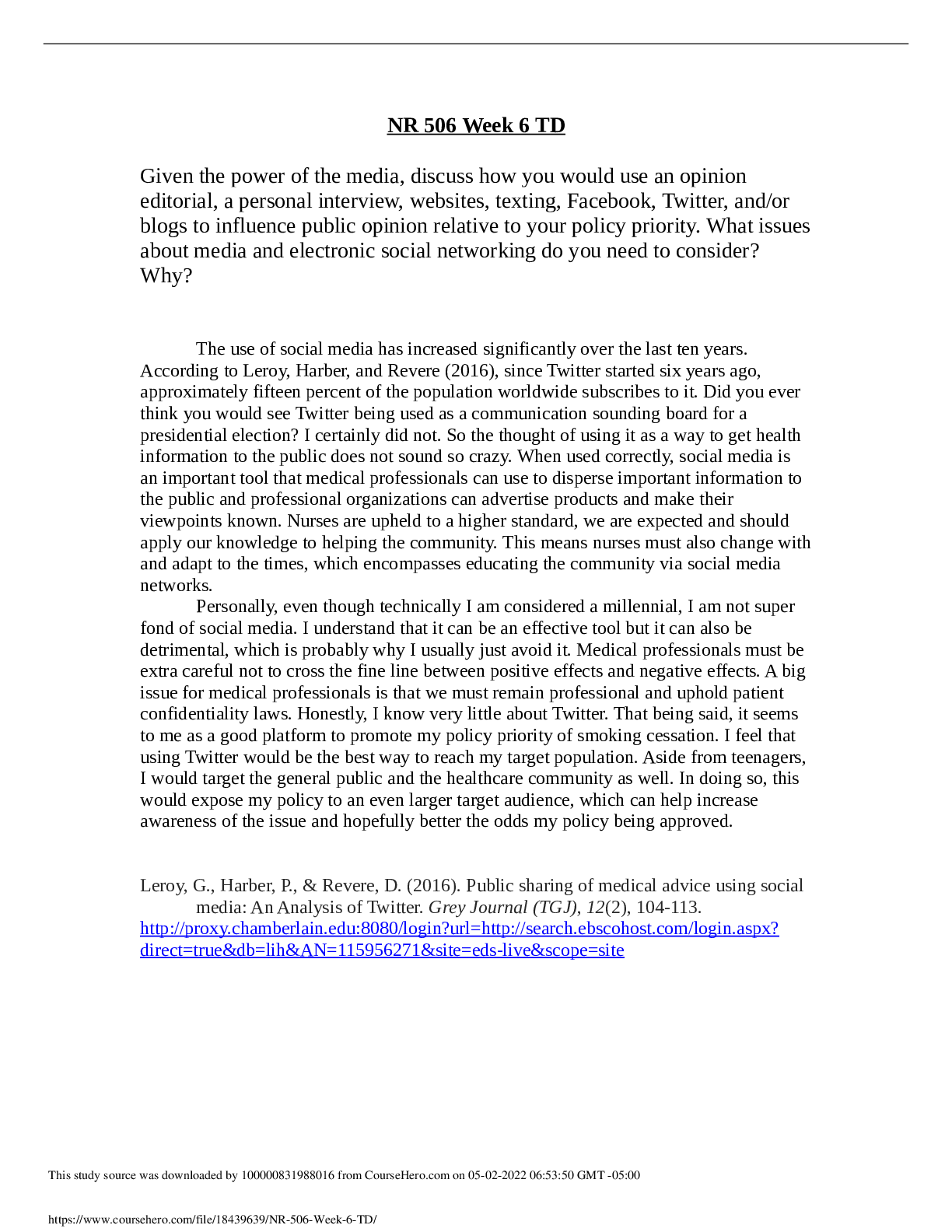
.png)
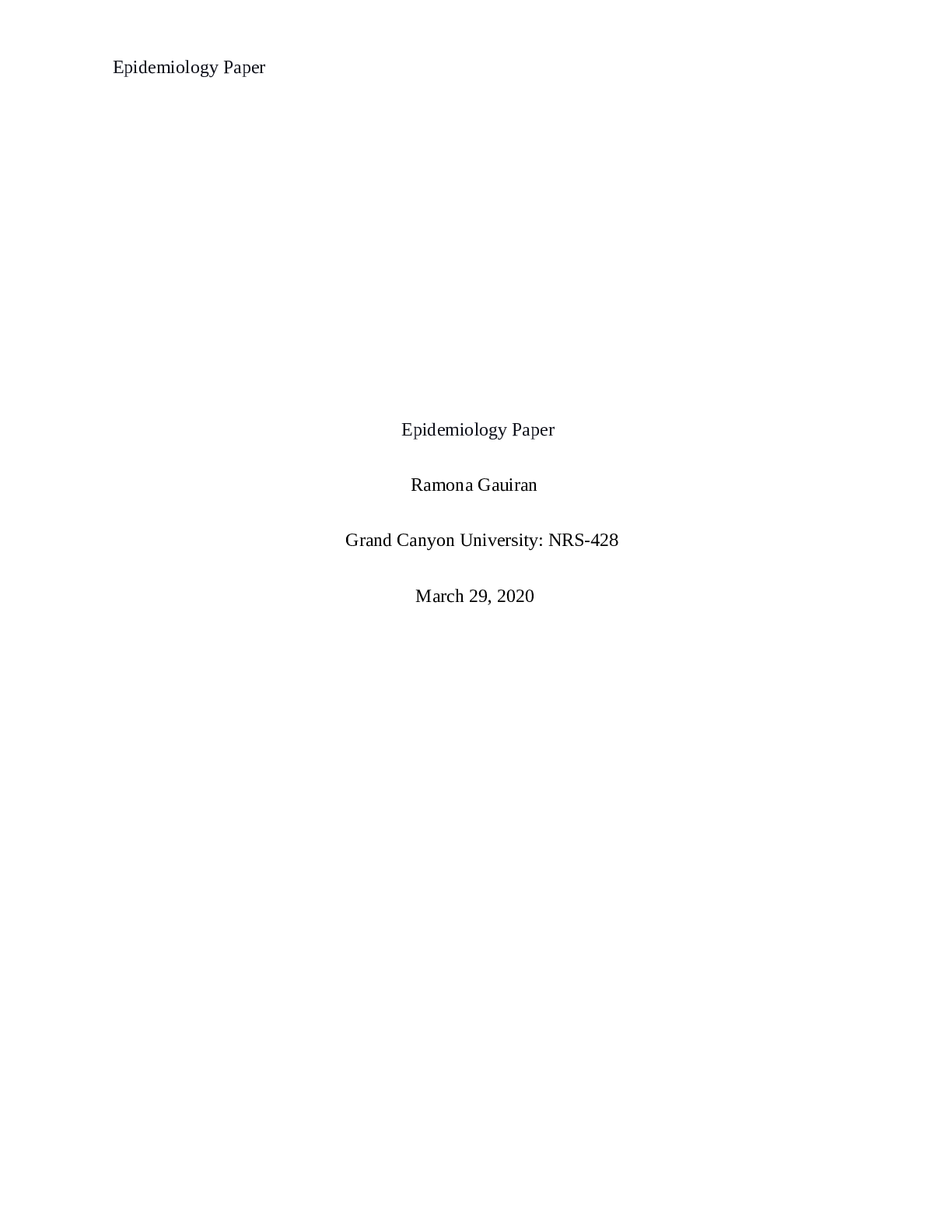
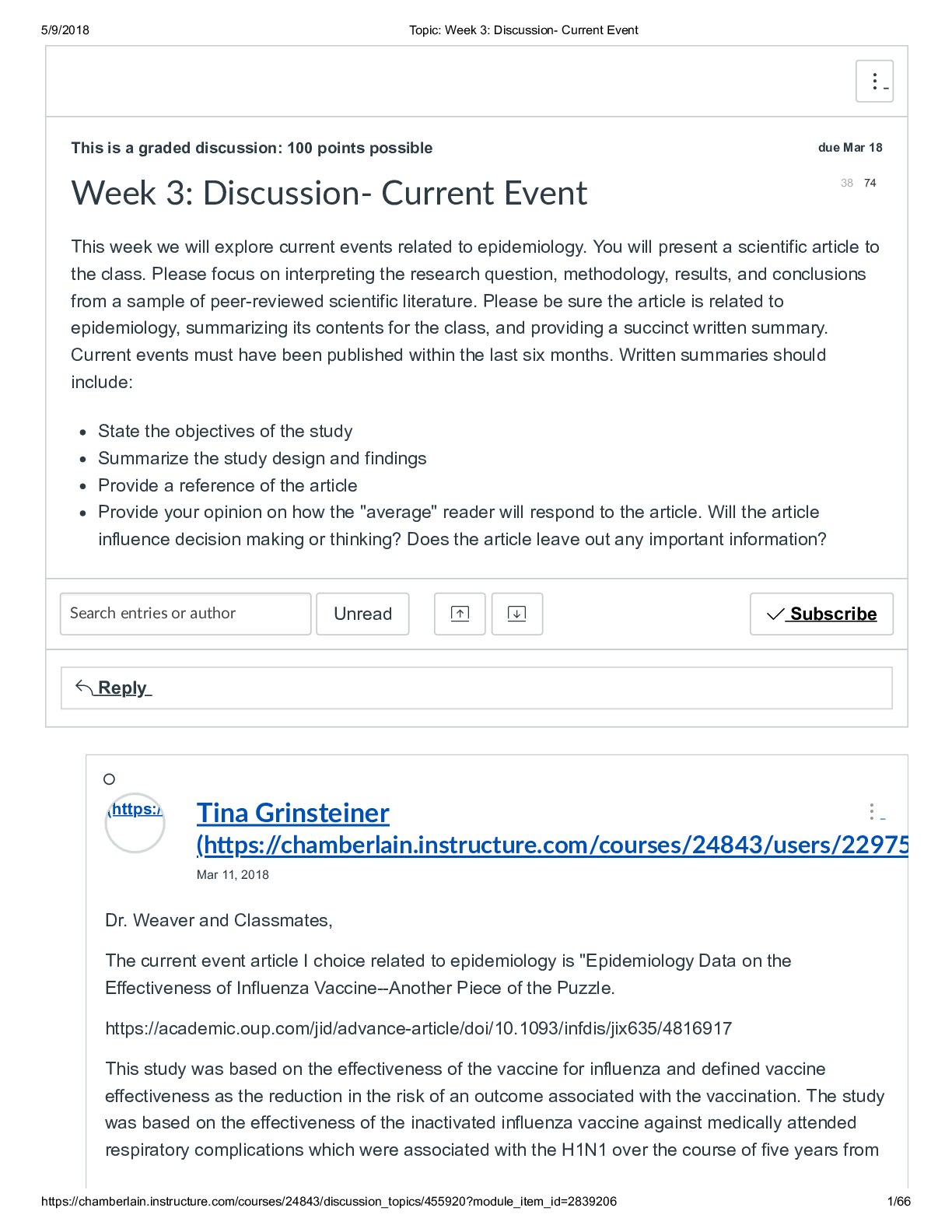

.png)

.png)
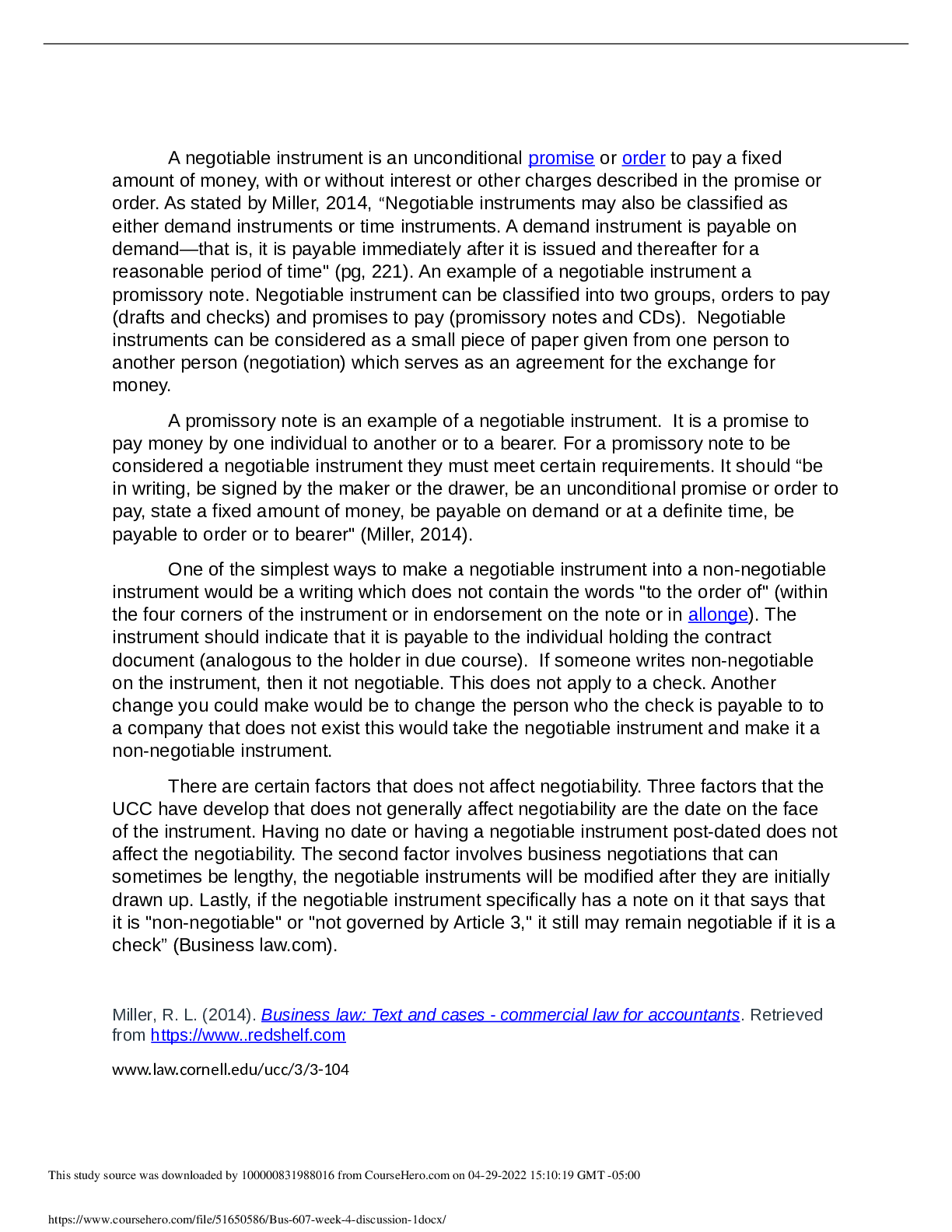
.png)
.png)

.png)

.png)

.png)
